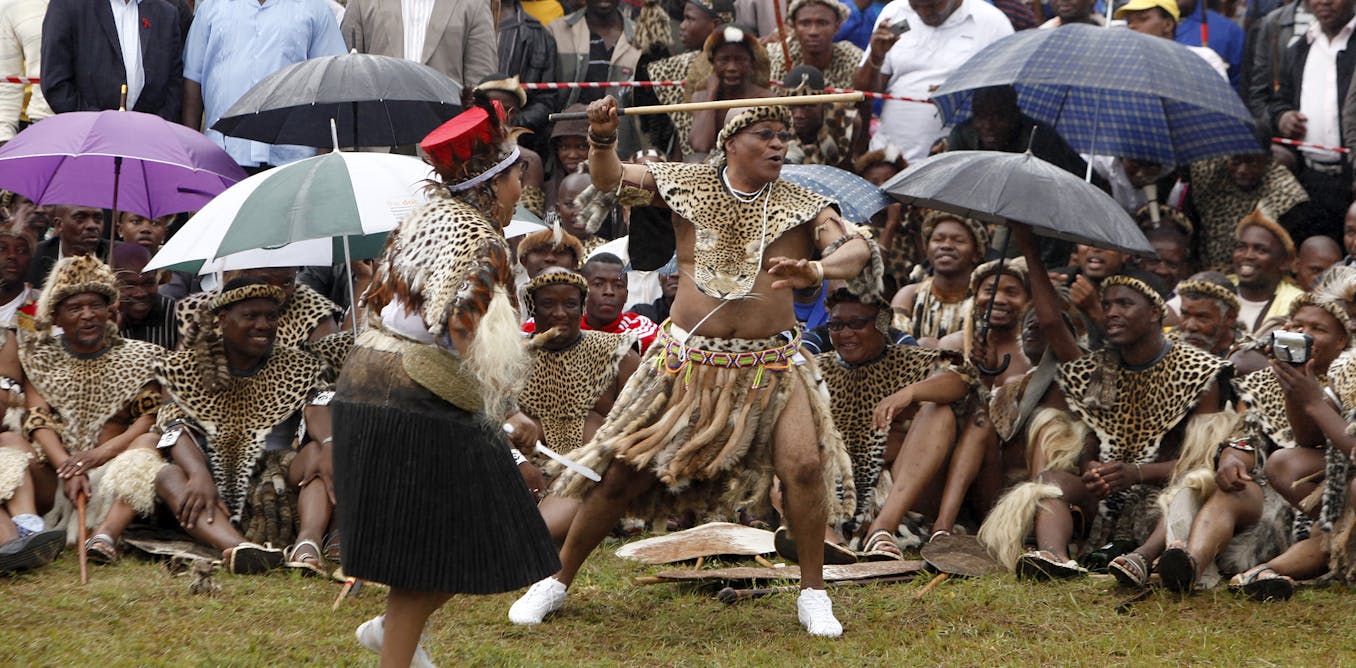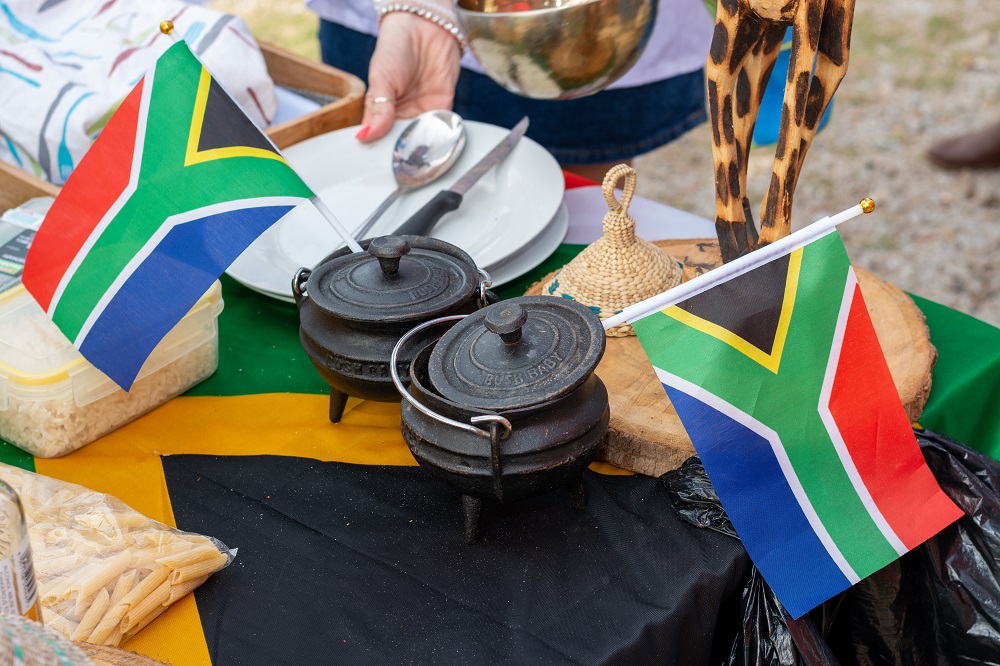South African Culture Today Things To Know Before You Get This
The smart Trick of South African Culture Today That Nobody is Talking About
Table of ContentsAn Unbiased View of South African Culture TodayGetting The South African Culture Today To WorkThe 9-Minute Rule for South African Culture TodayIndicators on South African Culture Today You Need To KnowThe 10-Minute Rule for South African Culture TodayThe Ultimate Guide To South African Culture Today
A matter of relevance in Zambian villages is the passing away of enjoyed ones. All participants of the town put money, time and initiative together for the interment of the deceased.During the mourning duration; guys remain outside the house and the ladies remain inside your home of the deceased. After speaking about the departed, the town walks to the area of burial to say their last goodbyes. Songs and dancing is a very vital element of the Zambian society. The various tribal units have their very own dancing types; however, makishi is typical amongst all people.
The Best Guide To South African Culture Today
When it comes to music, drums are used one of the most, with a selection of drumming events. In Zambia, bulk of individuals are Christian; Protestant and Roman Catholic. There are small groups of Muslims and Hindus, with the rest following local indigenous tribal beliefs.

South African heritage and society is tremendously varied, and includes several teams of individuals that each have their own customs and ideas. Having such a variety of individuals and societies is what makes South Africa so distinct. In truth feeling of the phrase, we are a rainbow country.
South Africa has around three hundred thousand Portuguese individuals residing in it. Making it the 7th on the listing of nations with one of the most Portuguese people in it beyond Portugal. Portuguese is not just a society, yet it is likewise a language and a race. Portuguese people stem from the nation of Portugal in Europe, however, due to Portugal (like lots of other nations in Europe) discovering the globe and dominating various other nations throughout the 15th 20th centuries, South Africa has what we call Portuguese South African's living in it.
South African Culture Today for Beginners
Among the famous features of the topography is a plateau that covers nearly two thirds of the facility of the nation. The plateau facility rises towards the southeast, where it culminates in the Drakensberg variety, component of an escarpment that divides the plateau from the coastal locations. The Drakensburg consists of Sparkling wine Castle, the highest peak in the country.
The region north of the Witwatersrand, called the bushveld, slopes downward from eastern to west towards the Limpopo River, which creates the international border. The western area of the plateau, the middleveld, also descends towards the west and differs in altitude in between the highveld and bushveld. Between the Drakensburg and the eastern and southern coast, the land comes down to the sea.
Nearer the coastline there is a low-lying level called the eastern lowveld. Southwest of the plateau the country comes to be gradually a lot more dry, paving the way to the stony desert of the Great Karroo, bordered on the east by the lower, better watered plateau of the Little Karroo. Separating the dry southern inside from the sandy coastal of the southern coast and West Cape is another array, the Langeberg.
Get This Report on South African Culture Today
The nation's racially, ethnically, and politically divided background has created national and subnational signs that still operate as signs of the country, and others symbols that are accepted just by specific teams. The monuments to white inhabitant conquest and political dominance, such as the Afrikaner Voortrekker ("pioneer") Monolith in Pretoria and the Rhodes Monument recognizing the British colonial empire builder and Cape prime minister Cecil Rhodes, remain sectarian icons.
The initial modern-day citizens were the San ("bushman") hunter-gatherers and the Khoi ("Hottentot") peoples, that herded animals (South African culture today). The San might have existed for thousands of years and left proof of their visibility in countless old cavern paintings ("rock art"). Bantu-speaking clans that were the ancestors of the Nguni (today's amaZulu, amaXhosa, amaSwazi, and vaTsonga peoples) and Tswana-Sotho language teams (today's Batswana and Southern and Northern Basotho) moved down from eastern Africa as early as the fifteenth century

Both previous republics of the Orange Free State and Transvaal (South African Republic) were established by Afrikaner settlers that beat and dispossessed the Basotho and Batswana. Lesotho would certainly have been by force included right into the Orange Free State without the expansion of British defense in 1869. The best unification of the country resulted from the South African Battle (18991902) in between the British and both Afrikaner republics, which reduced the nation to spoil at the start of the twentieth century.
Afrikaners traditionally considered themselves the only real South Africans and, while approving full citizenship to all citizens of European descent, refuted that standing to individuals of color up until the autonomous change of 1994. British South Africans preserve a sense of social and social connection to Great Britain without weakening their identification as South Africans.
The Facts About South African Culture Today Uncovered
The diversity and fragmentation within ethnic collections and the equilibrium of tensions in between those groups during the twentieth century stopped interethnic civil conflict. While intergroup tensions over resources, privileges, and political prominence continue to be, those disputes are as most likely to pit Zulu versus Zulu as Zulu against Xhosa or African versus Afrikaner.
From colonial India, British sellers and managers brought the rounded steel decorative roof coverings and slender shoelace job pillars that still Get the facts exemplify the outdoor patios of cottages in towns and cities throughout the nation. Homes of prayer add an important architectural facet even in the smallest towns. Along with the rising steeples and traditional stonework of Afrikaans Dutch Reformed churches, Anglican churches, synagogues, mosques, and Hindu shrines offer selection to the religious architectural scene.

Butchering and the developing of traditional grain beer are necessary in safeguarding the engagement and goodwill of the ancestors that are thought about the guardians of good ton of money, success, and health. Indian neighborhoods maintain their native cooking practices and apply them on Islamic and Hindu ritual and ritualistic celebrations. Afrikaners and Coloured people gather at weekends and unique occasions at multifamily barbeques called braais, where neighborhood bonds are enhanced.
Because this was the key economic enterprise of both black Africans and white homesteaders, problem in between those groups centered on the belongings of grazing land and livestock. Recommended Site In 1867, the biggest diamond down payments on the planet were discovered at Kimberley in the west main area. The wide range from those fields assisted finance the exploitation of the greatest gold coral reef in the world, which was discovered on the Witwatersrand in 1886.
The smart Trick of South African Culture Today That Nobody is Talking About
This brought about misconceptions and intentional misstatement in the ventures of white inhabitants and government authorities helpful hints with African principals throughout the colonial period (South African culture today). In the facility of African books, some aspects of public and primarily "tribal depend on" land period were maintained, and also in white country areas, forms of public tenure were still practiced in areas with African communities
After the democratic change of 1994, programs for land restitution, redistribution, and reform were instituted, but development has been slow-moving. The white minority still manages eighty percent of the land. Following agricultural land intrusions in Zimbabwe, the Department of Land Affairs has promised to speed up land redistribution.